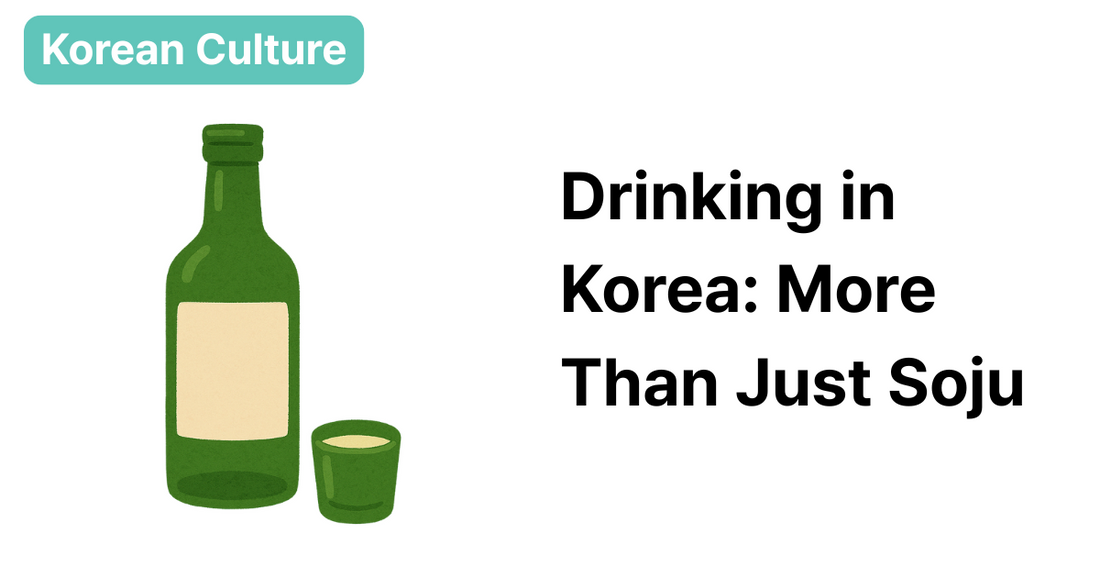
Drinking in Korea: More Than Just Soju
Share
When most people think of Korean drinking, one word comes to mind: soju.
But drinking in Korea is about more than what’s in the glass—it’s about connection, hierarchy, and shared experiences.
From office dinners to late-night BBQs with friends, drinking is a major part of social life.
Let’s explore what makes Korean drinking culture so unique.
What Is a “Hoesik”?
Hoesik (회식) literally means “company meal,” but it usually involves alcohol and bonding after work.
It’s a long-standing tradition in Korean work culture, where colleagues gather outside of office hours to eat, drink, and loosen up.
Here’s what a typical hoesik might look like:
- 🍖 Samgyeopsal (grilled pork belly) and soju at a restaurant
- 🍻 Round 2 at a bar or karaoke (called “noraebang”)
- 🤝 Bosses and employees sharing honest conversations they wouldn’t have during the day
💡 Hoesik is often seen as a “mandatory social ritual” in companies, though attitudes are changing among younger generations.
Unwritten Drinking Etiquette
In Korea, how you drink is just as important as what you drink.
There are many unspoken rules that show respect—especially in age- or rank-conscious settings.
Here are a few key etiquette tips:
- Pouring Drinks: Never pour your own. You should pour for others, especially elders or seniors.
- Two Hands Rule: Use two hands when pouring or receiving a drink from someone older.
- Turn Away Slightly: When drinking in front of a senior, it’s polite to turn your head to the side.
- Pace Together: You don’t always need to finish your glass, but keeping pace with the group is seen as respectful.
💡 These small actions show humility, respect, and care—key values in Korean social interactions.
More Than Alcohol: A Way to Bond
Drinking in Korea isn’t just about getting drunk—it’s about breaking down walls.
- Colleagues become more relaxed
- Friends share deeper stories
- Even strangers may become close over a few glasses of makgeolli (rice wine)
And it’s not always alcohol!
Tea houses, cafes, and non-alcoholic drinks also play a big role in bonding—especially for those who don't drink.
💬 Whether it’s a first date or a team dinner, drinking together often signals: “I trust you. Let’s be real.”
In Korea, It’s Not Just What You Drink—It’s Who You Drink With
Soju may be famous, but Korean drinking culture is less about the drink and more about the people, the atmosphere, and the connection.
Next time you find yourself at a Korean table, remember:
Every round is a chance to get closer—to friends, coworkers, or even yourself.
📩 Subscribe to our newsletter
Get weekly cultural insights, Korean expressions, and food + lifestyle stories—straight to your inbox!
